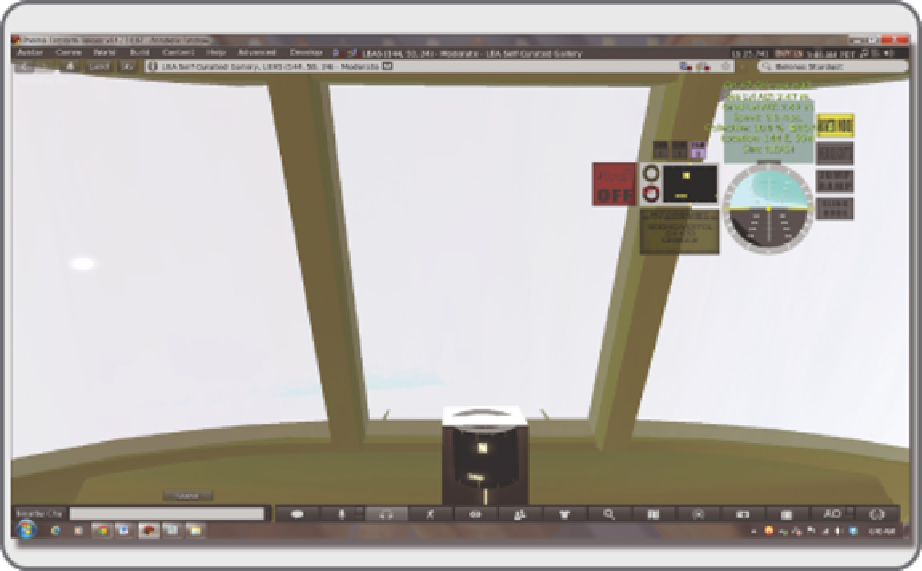Game Development Reference
In-Depth Information
FIGURE 15.7
Screen shot from Second Life, showing the view out of the windshield and the HUD for a virtual Army
CH-47 Chinook helicopter. The helicopter and interface were designed and built by Belenos Stardust, CEO Stardust
Enterprises Incorporated.
15.4.3 s
eTTing
The
m
ood
WiTh
a
hud
“Carry the concept through the design” are words to live by. A little window dressing can help the content
maker set up the mental space in a user's mind for immersion and the creation of Flow. For instance, sup-
pose you have designed a region that is a replica of the senate in ancient Rome. In fact, you have even set it
up so that togas are required to be worn by the visitors to further enhance the immersion. Think how much
a teleport HUD that looks like an old map or inlaid mosaic would add to this experience. Carry your design
forward onto the screen and completely embrace the aesthetic of your particular design so that the user is
never reminded of the other world by your graphics.
One of Second Life's premiere builders, Flea Bussy, creates beautiful HUDs for the creatures she designs.
In Figure 15.8, you will see the Halloween Rat and the HUD (enlarged for image clarity) that goes with it.
All the pictograms are clear identiiers of what the rat will do, making this avatar accessible to anyone, no
matter what language the person reads and speaks.
15.4.4 u
sing
hud
s
To
p
lay
a
g
ame
The potential of HUDs gives virtual world content designers the opportunity to be diabolical. Imagine a
game where you have to build a tool, attaching it piece by piece to your HUD to stay alive, or you are creating

